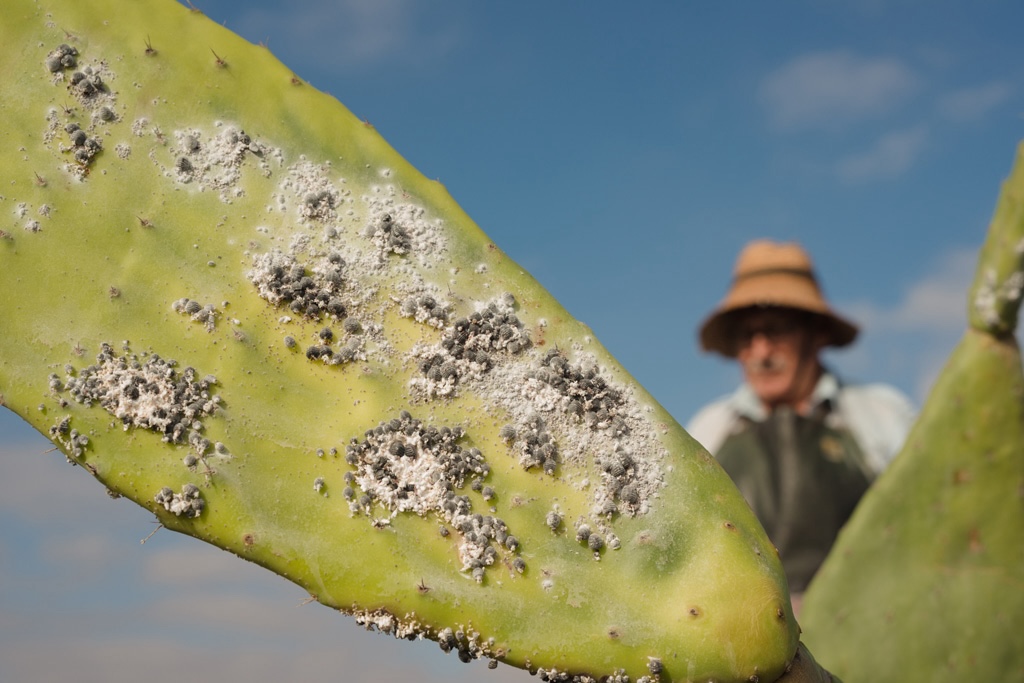Local Storage seems to be disabled in your browser.
For the best experience on our site, be sure to turn on Local Storage in your browser.
Cochineal (La cochinilla)

 Cochineal, a tiny insect that feeds on succulent plants like prickly pears, has played a surprisingly crucial role throughout history, thanks to a valuable resource it produces: carmine acid, an intense red pigment. This pigment has been appreciated for its versatility and has been used in various industries, with a significant emphasis on the cosmetic industry.
Cochineal, a tiny insect that feeds on succulent plants like prickly pears, has played a surprisingly crucial role throughout history, thanks to a valuable resource it produces: carmine acid, an intense red pigment. This pigment has been appreciated for its versatility and has been used in various industries, with a significant emphasis on the cosmetic industry.
What is cochineal?
Cochineal, scientifically known as Dactylopius coccus, is a tiny insect that attaches to the leaves of certain succulent plants, where it feeds on their sap. These insects produce a red pigment called carmine acid, found in their bodies and extracted for various uses.
Harvesting process
The collection of cochineal involves scraping or brushing the insects off cactus leaves. Once collected, cochineal is left to dry in the sun for storage and further processing, where it is crushed or ground to obtain carmine acid.
Brief history of cochineal
This insect has had a significant role throughout history. In pre-Columbian America, civilizations like the Aztecs used cochineal as a pigment in their textiles and in ritual ceremonies. However, its true impact occurred with the arrival of Spanish colonizers in America, who exported cochineal to Europe, where it became a highly valued product in the textile and cosmetic industry.
Cochineal in the Canary Islands
The Canary Islands, in particular, had an important role in cochineal production. During the 18th and 19th centuries, the massive cultivation of this species on islands like Lanzarote became a key economic pillar for the region, generating significant income due to its carmine pigment.
Use in the cosmetic industry
The carmine acid extracted from cochineal is appreciated in the cosmetic industry for its quality and versatility. It is used in the manufacturing of lipsticks, creams, and hair dyes, offering intense, long-lasting, and natural colors. Its natural origin makes it attractive to those seeking more sustainable and environmentally-friendly cosmetic products.Contemporary relevanceAlthough its demand decreased with the arrival of synthetic dyes in the 20th century, there has been a renewed interest in cochineal in recent decades. Its use in the cosmetic industry has experienced a resurgence, driven by consumers' growing preference for natural and sustainable products.
In summary, cochineal, with its carmine pigment, has left an indelible mark in pre-Columbian, colonial, and contemporary history. It has been a valuable resource in the cosmetic industry, playing a significant economic role, especially in the Canary Islands, where it has been a symbol of their cultural identity and an economic cornerstone.


